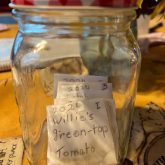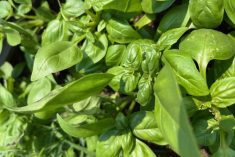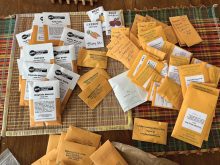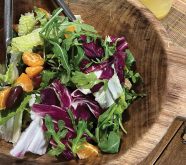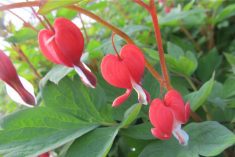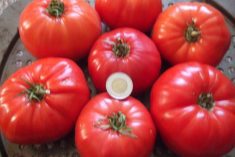During my primary grade school years, teachers focused a lot on memorizing — especially poetry. One poem in particular that still vividly speaks to me, even to this day is “Trees,” by Joyce Kilmer. His dramatic poem whose words appear next, may also speak to others out there among our family of Grainews readers.
I think that I shall never see
A poem lovely as a tree.
A tree whose hungry mouth is prest
Against the earth’s sweet flowing breast;
Read Also

Gentle treatments for pain in the neck
Heading toward year-end, people unknowingly tense up against the cold and busyness, causing neck pain that can often be treated with appropriate support and gentle mobility, athletic therapist Kathlyn Hossack says.
And lifts her leafy arms to pray;
A tree that may in Summer wear
A nest of robins in her hair;
Upon whose bosom snow has lain;
Who intimately lives with rain.
Poems are made by fools like me,
But only God can make a tree.
If that suggests I’ve something further to write about trees, you’ve “hit the nail on the head.” Many of those old expressions composed of just a few words can also speak a lot when we know what they mean. For example, “Bob’s your uncle,” means everything is perfect or as good as it gets. Let’s say for example that you apply for a job at a tree nursery and describe yourself as a “Johnny Armstrong,” meaning you’re eager to work at manual labour, have strong arms and human hand power. You get hired “Johnny on the spot,” because the nursery owner remembers your name as a “Johnny Armstrong” — so “Bob’s your uncle.”
March winds can be mean and nasty so I’m grasping firmly onto the brim of my hat with one hand and ringing a hand bell in the other while I’m shouting out like the town crier: Hear Ye, Hear Ye — Welcome All.
Questions about the hackberry tree
Brian Wallis from Tisdale, Sask., writes:
I have a question about the hackberry tree. Does it produce seeds like the Siberian elm and does it actually produce edible fruit? When I Googled it, that was mentioned. My folks planted a row of Siberian elm in the yard many years ago and the seeds drive us nuts. I keep telling my mother a D8 cat is the answer but that is not what she wants to hear. Looks like that could be a good replacement. Thank you. I always enjoy your articles. — Brian Wallis, Tisdale.
Ted replies: I’m sharing the following in connection with the hackberry tree, its seeds and performance, after speaking with Wilbert Ronald and Philip Ronald. Together they co-authored their book Trees For Northern Landscapes.
Hackberry trees produce small hard seeds about one-quarter inch or so in diameter which turn dark brown when mature. The tree is not considered weedy as is the case with Siberian elm and box elder maple. The northern “Delta” seed is more of a Zone 3 strain and hasn’t been tested for hardiness in the Tisdale region which is in Zone 2. However, there is hope with hackberry in Zone 2 and other northern areas.

Here’s a suggestion for the gentleman from Tisdale. Keep your existing elms for now as they sound well established. As replacement trees you might test some Delta hackberry, along with Dropmore linden or a fast-growing seedless poplar such as the new Sundancer. Then follow up with replacing your existing trees based on local performance of hackberry and the other two trees named. Two area nurseries to inquire at are Boughen Nurseries, Nipawin and Zosel Tree Farms, Pleasantdale.
Birds do eat hackberry seeds. During spring when they’re coming back this way from the south, hackberry seeds are one of their preferred foods along the journey. That’s probably how the tree got to Delta Marsh (Manitoba) in the first place. Although birds are definitely attracted to hackberry seeds, no parts are of any edible value for humans.
The seeds fall straight down to the ground from the tree and are not wind driven elsewhere. They can be readily collected in fall and must be stratified. In horticulture, stratification is a process of treating seeds to simulate natural conditions that the seeds must experience before germination can occur. Hackberry is similar to any other seed species that have an embryonic dormancy phase, and generally will not sprout until this dormancy is broken.
There are two ways to complete the stratification process. Place gathered hackberry seeds in moist sand or moist peat in a plastic bag and store in the fridge for about 90 to 120 days. Keep in mind moisture is an essential part. That method usually breaks dormancy. Following fridge stratification the seeds can be planted outside in chosen locations. Seeds that fall naturally to the ground are simply left there on the surface and become stratified by nature over winter and can be gathered or left for birds and squirrels. The Delta hackberry strain tree should work in Zone 2 as long as it’s not openly exposed to the elements and there’s some shelter. The general opinion is there’s no reason why hackberry trees won’t work at Tisdale. Take note there’s no issue with any weeds from hackberry; not even close. Common hackberry is easily distinguished from elms by its cork-like bark with wart-like protuberances. The leaves lack symmetry. Although hackberry is not a widely planted tree yet, change is now coming.
Peonies with people names
Peonies are among the most beautiful and easily cared for perennials that grow well and survive in our Canadian climate. Investing in peonies gives the gardener a lifetime of visual pleasure from blooms and attractive foliage during the rest of the season. Some varieties are a bit slow to become established but they make up for it with an abundance of flower power during decades afterward. Many peonies generate sweet-smelling and highly scented perfume. Some nurseries that grow their own peonies have the largest selection of varieties for sale and may only sell roots in the fall. Garden centres that bring them in from a supplier may be more inclined to sell peony root divisions both spring and autumn but name choices can be limited.

Well, there’s no peony, nor any other plant I’m aware of that’s named simply: Ted. There are, however, peonies with plenty of people names. Here are just a few of them: Peter Barr, A.B. Franklin, A.G. Perry, Ann Cousins, Marie Jacquin, Edgar Jessep, Edward Flynn, and Linda K. Jack.
Why there’s even a peony called “Bessie,” a lovely pink double with very large blooms. That name “Bessie” brings memories and takes me back to my early teen years when I was responsible for looking after a cow. Duties included tethering her out into the pasture, pumping water to fill the trough, daily hand milking and separating the cream and making butter once cream turned sour. That cow’s name was Bessie. Watch for winners’ names of Cosmonaut Volkov tomato seeds in April 9, 2019 Grainews.




